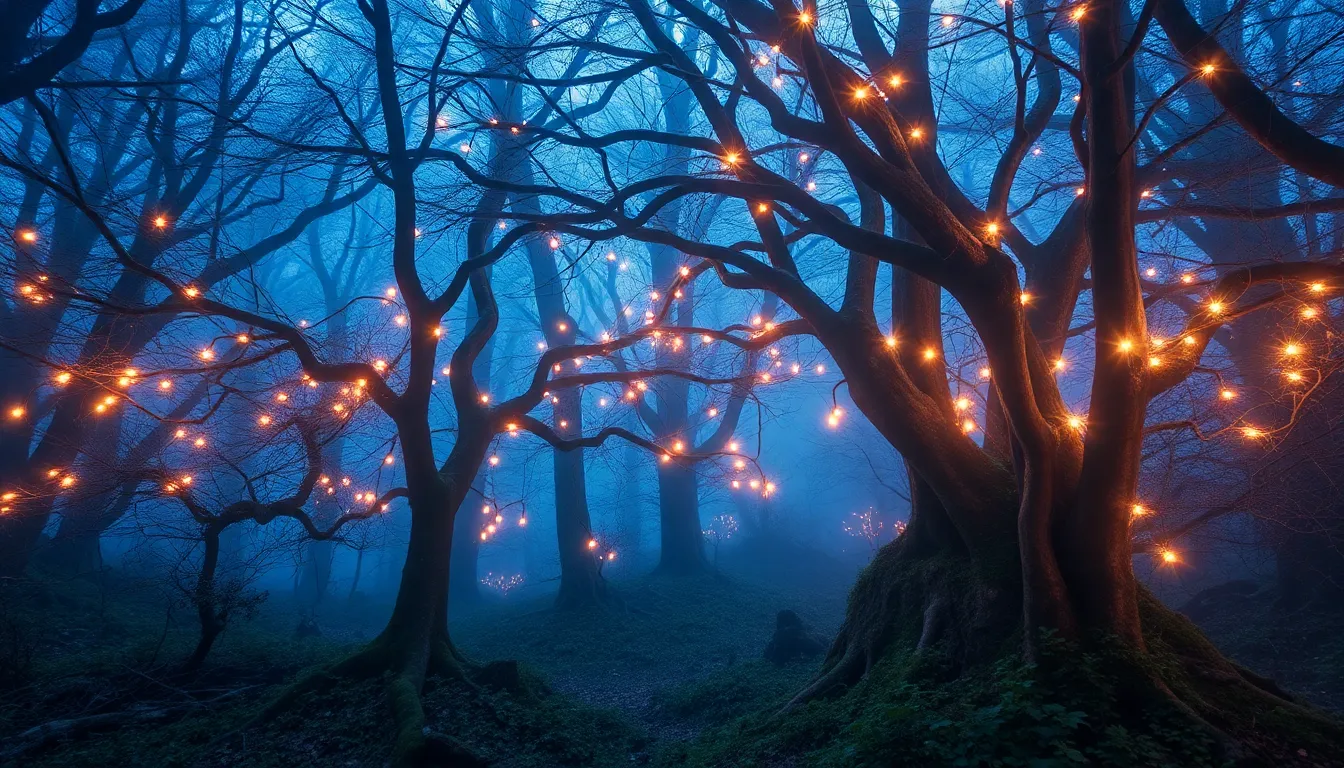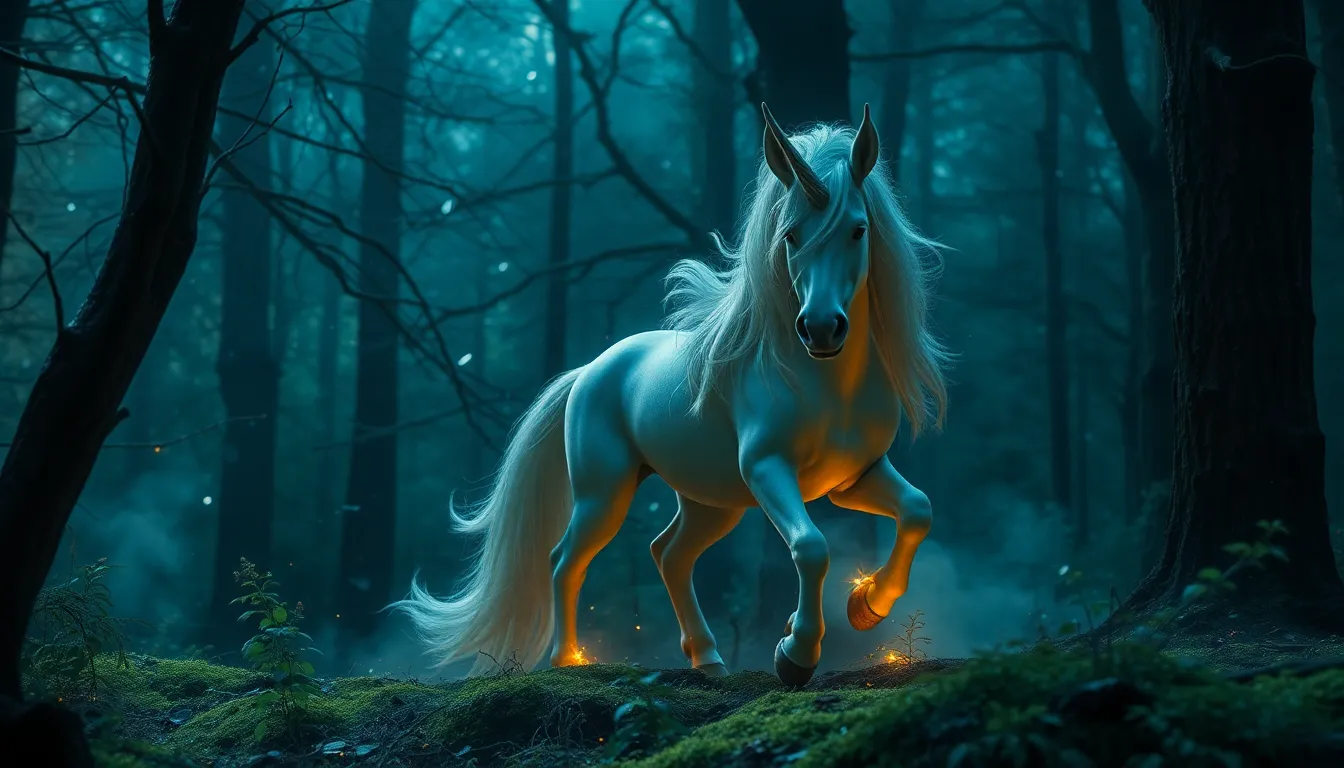Unraveling the Myths of Enchanted Forests: A Deep Dive
I. Introduction to Enchanted Forests
Enchanted forests have captivated the human imagination for centuries, serving as sacred spaces where the mystical and the natural intertwine. These forests are often depicted as realms of magic, mystery, and adventure, offering a refuge for those seeking solace from the mundane world. The term “enchanted forest” typically refers to a wooded area imbued with a sense of wonder, where one might encounter magical creatures, discover hidden treasures, or find themselves on a transformative journey.
Culturally, enchanted forests hold significant meaning across various societies. They often symbolize the unknown, the subconscious, and the journey of self-discovery. Myths and stories associated with these forests have been passed down through generations, shaping our understanding of nature and its mysteries.
II. Historical Origins of Enchanted Forest Myths
A. Ancient folklore and their influence on modern perceptions
The origins of enchanted forest myths can be traced back to ancient folklore. Many cultures have their own versions of these magical woods, often populated by supernatural beings. For instance, in Celtic mythology, the Otherworld is often depicted as a lush, green paradise, accessible through hidden gateways in the forests. Similarly, in Norse mythology, the Yggdrasil tree connects various realms, with its roots delving deep into enchanted landscapes.
B. Regional variations: Enchanted forests across different cultures
- The Forest of Arden: Featured in Shakespeare’s “As You Like It,” this forest symbolizes transformation and love.
- Broceliande: A mythical forest in Brittany, France, tied to the legends of Merlin and King Arthur.
- The Black Forest: A German woodland steeped in tales of witches and fairytale characters, such as those from the Brothers Grimm.
III. Common Myths and Misconceptions
A. The idea of magical creatures: Fairies, elves, and more
One of the most enduring myths surrounding enchanted forests is the presence of magical creatures. Fairies, elves, and other beings are often believed to inhabit these woods, bestowing blessings or curses upon those who venture within. This notion has been popularized in literature and film, leading to a widespread belief in the existence of these fantastical beings.
B. The concept of enchanted flora and fauna
Enchanted forests are often portrayed as havens for unique plants and animals, possessing extraordinary properties. From healing herbs to trees with the power to grant wishes, the flora and fauna in these forests are imbued with magic. However, while many plants in real forests do have medicinal properties, the exaggeration of their abilities in folklore can lead to misconceptions.
C. Misinterpretations of the forest’s natural phenomena
Natural phenomena, such as bioluminescent fungi or peculiar wildlife behavior, can be misinterpreted as signs of enchantment. For instance, the appearance of fireflies on a summer night may evoke a sense of magic, leading people to believe in the supernatural. Understanding these phenomena through a scientific lens can demystify many aspects of enchanted forests.
IV. The Role of Enchanted Forests in Literature and Art
A. Famous literary works featuring enchanted forests
Enchanted forests have been a prominent setting in literature, often serving as a backdrop for character development and thematic exploration. Some notable works include:
- “A Midsummer Night’s Dream” by William Shakespeare – A forest where love and magic intertwine.
- “The Chronicles of Narnia” by C.S. Lewis – The magical woods lead to the land of Narnia.
- “The Fellowship of the Ring” by J.R.R. Tolkien – Lothlórien, the realm of the Elves, is an enchanted forest of beauty and tranquility.
B. Artistic representations and their impact on myth-making
Artists throughout history have depicted enchanted forests in various forms, from paintings to sculptures. These representations often emphasize the beauty and mystery of nature, reinforcing the myths surrounding these magical places. The aesthetics of enchanted forests in art contribute to their allure, inspiring countless interpretations.
C. Modern adaptations and their interpretations of enchanted themes
Contemporary adaptations of enchanted forest themes continue to thrive in films, books, and other media. Productions such as “Into the Woods” and “Frozen” explore the complexities of enchanted landscapes, blending traditional folklore with modern storytelling techniques.
V. Psychological and Emotional Significance of Enchanted Forests
A. The allure of nature and its therapeutic effects
Spending time in nature, particularly in forests, has proven mental health benefits. Enchanted forests, with their serene environments, provide a therapeutic escape from the stresses of daily life. Research indicates that immersion in natural settings can reduce anxiety, improve mood, and enhance overall well-being.
B. Symbolism of enchanted forests in personal journeys and transformation
Enchanted forests often symbolize personal growth and transformation. They serve as metaphors for the challenges one must navigate in life. The journey through an enchanted forest can represent the trials and tribulations faced on the path to self-discovery.
C. The role of enchanted forests in childhood imagination and storytelling
For children, enchanted forests are realms of endless possibilities, fostering imagination and creativity. Stories about magical woods encourage exploration and adventure, shaping their understanding of the world and their place within it.
VI. Scientific Perspectives on Forests and Biodiversity
A. The ecological importance of forests
Forests play a critical role in maintaining ecological balance. They provide habitat for countless species, regulate the climate, and contribute to the global carbon cycle. Understanding the scientific significance of forests helps reinforce the importance of their preservation.
B. How scientific discoveries challenge or reinforce myths
Scientific research often uncovers facts about forests that can challenge long-held myths. For example, while enchanted flora may be rare, many plants possess unique adaptations that can seem magical. This interplay between science and folklore enhances our appreciation of natural wonders.
C. The impact of folklore on conservation efforts
Folklore can play a significant role in conservation efforts by fostering a sense of connection to nature. Stories about enchanted forests can inspire communities to protect these vital ecosystems, blending cultural heritage with environmental stewardship.
VII. Enchanted Forests in Pop Culture
A. Films and television shows that spotlight enchanted forests
Enchanted forests have become a popular setting in modern films and television series. Titles such as “The Princess Bride,” “Avatar,” and “The Secret of NIMH” feature these magical landscapes, drawing audiences into their enchanting worlds.
B. Video games and their immersive forest environments
Video games frequently utilize enchanted forests as immersive environments where players can explore, quest, and interact with magical elements. Games like “The Legend of Zelda” series and “Hollow Knight” incorporate these themes, engaging players in their captivating narratives.
C. The intersection of tourism and magical forest experiences
The allure of enchanted forests has led to a burgeoning tourism industry, with destinations marketed as magical getaways. These experiences often blend nature with elements of folklore, allowing visitors to explore the beauty and mystery of enchanted landscapes.
VIII. Environmental Threats and Preservation Efforts
A. The impact of deforestation and climate change on enchanted landscapes
Enchanted forests face significant threats from deforestation, climate change, and habitat loss. These challenges endanger not only the biodiversity within these ecosystems but also the cultural narratives that surround them.
B. Conservation initiatives focused on preserving mythical forests
Many organizations are dedicated to preserving enchanted forests through conservation initiatives. Efforts include reforestation projects, habitat restoration, and community engagement to raise awareness about the importance of these magical environments.
C. How folklore can aid in environmental awareness and protection
Folklore can serve as a powerful tool for environmental advocacy. By promoting stories of enchanted forests, communities can cultivate a deeper appreciation for nature, encouraging stewardship and protection of these vital ecosystems.
IX. Personal Experiences and Anecdotes
A. Real-life encounters in forests that evoke a sense of enchantment
Many individuals recount personal experiences in forests that evoke feelings of enchantment. Whether it’s witnessing a breathtaking sunset through the trees or encountering wildlife in its natural habitat, these moments can feel magical and transformative.
B. The role of storytelling in sharing personal experiences
Storytelling plays a crucial role in sharing personal experiences related to enchanted forests. By recounting


